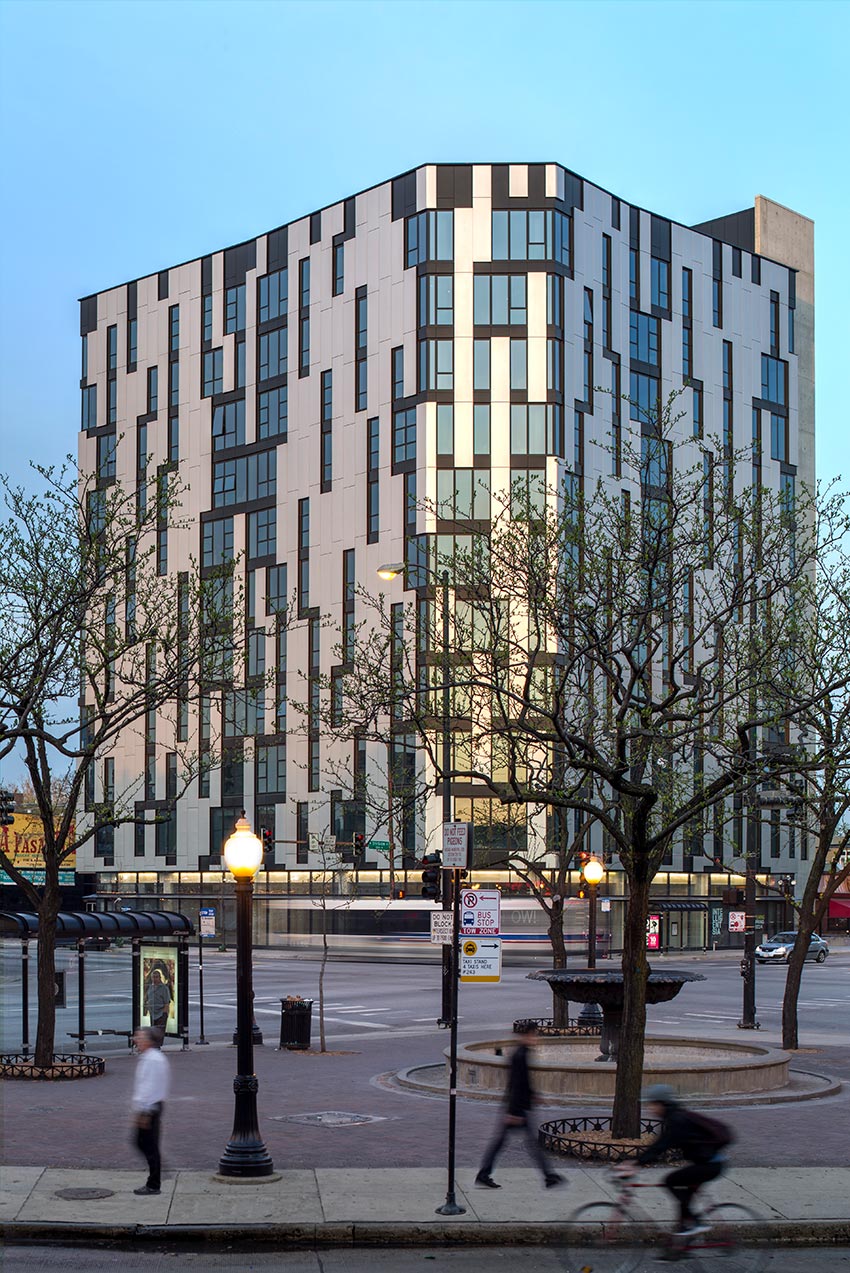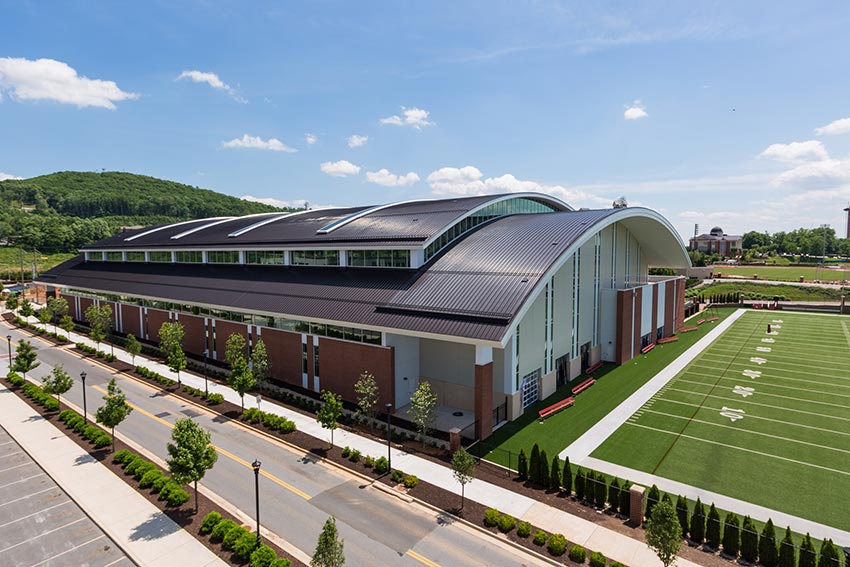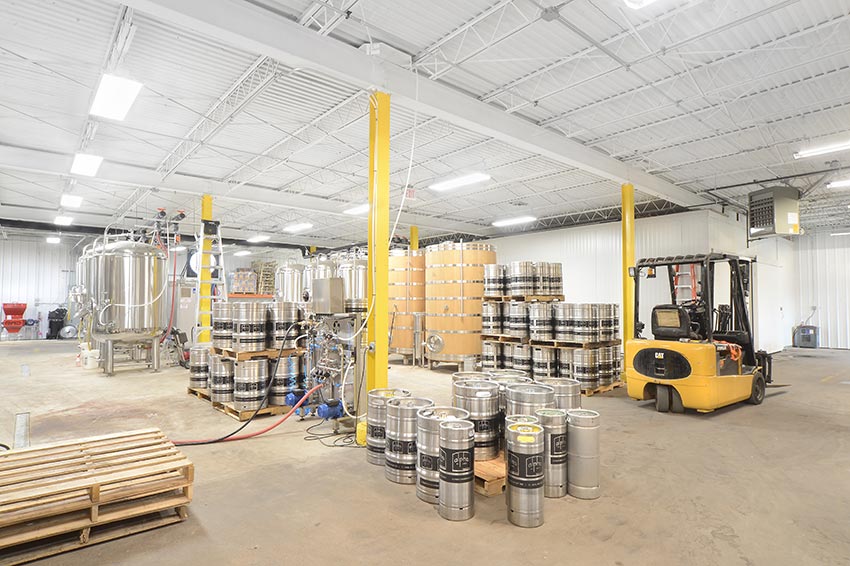To Code...and Beyond
Fire Codes and IMPs
Preventing fire and keeping fire damage to a minimum are primary industry and regulatory concerns. Not only must buildings resist and thrive under daily weather and temperature changes, but the best buildings also are resilient and can weather major disasters. The basis for passive fire protection in fire-safety regulation, particularly in U.S. codes, is that all products used in construction must comply with some appropriate fire test suitable for the application.

Photo courtesy of Kingspan
High-rise buildings in particular, such as 1611 West Division in Chicago, fall under intense scrutiny by fire codes. Both individual materials and integrated systems are tested under U.S. regulations.
U.S. codes require that a fire test incorporates every one of the components of the wall assembly, as the product to be used in the field, instead of testing individual components only.
IMPs use a foam plastic core. This core gives IMPs superior insulating properties, providing increased energy efficiency. While foam offers superior thermal performance per unit thickness over noncombustible insulating materials, it is a combustible cladding material and must be tested appropriately according to the IBC.
The fire performance of IMPs is measured via many factors. The metal facing is evaluated for both gauge and the melting point of the facing. The foam core is tested for flame spread, smoke developed, heat of combustion, Btu content, ignition temperatures, polyisocyanurate (PIR) vs. polyurethane (PUR) (ratio of isocyanurateto polyol), density (amount of plastic per volume), thickness, blowing agent type, and amounts and fire retardants. The panel design must be evaluated for joint engagement—male/female interlock depth, joint strength, and geometry of male/female interlock. Attachment methods, including clips and through fasteners, the ability of clips/fasteners to keep joints closed and tight, the use of trims and extrusions or exposed panel edges, and type of sealant, also are examined.
U.S. codes typically require that wall assemblies be fire tested as a complete assembly utilizing the specific combustible components that will be included in the wall. Substitution of components can take place based on additional testing or engineering review. The main focus is how components will work together to resist the spread of fire. In particular, U.S. codes place special emphasis on ensuring the fire safety of foam plastic insulation materials. Foam plastic insulation materials used in construction, including those used as components of assemblies, must comply with the fire safety requirements contained in Chapters 14 and 26 of the IBC.
The foam plastic insulation materials themselves must also be listed and labeled. Listing of a product involves two steps: the conducting of appropriate fire tests to show code compliant results and the assurance that the products are manufactured consistently to continue complying with the code requirements. In order for foam plastic insulation materials to be listed for U.S. construction use, the materials must have complied with a flame-spread index of not more than 75 and a smoke-developed index of not more than 450 (i.e., a Class B) where tested in the maximum thickness intended for use in accordance with ASTM E84 (known frequently as the Steiner tunnel test) or UL 723 (which is an equivalent fire test method).
Fire testing of the foam itself is, of course, just the basic requirement for materials to be able to be considered for use as the core in IMPs or as a component of an acceptable combustible wall-cladding assembly. The complete assembly must also be fire tested using NFPA 285 when used as or on exterior walls of type I, II, III, or IV construction, which are greater than one story in height. One story buildings are exempt from NFPA 285 provided the building is equipped throughout with an automatic sprinkler system (2603.4.1.4). The NFPA 285 fire test evaluates the vertical and lateral flame-propagation potential of any wall system that contains combustible components, typically foam plastic insulation.
Although foam has fallen under the intense scrutiny of building codes, the scrutiny has paid off with safety. The use of IMPs containing foam plastic insulating materials, when they comply with the appropriate fire test requirements for both the components individually and the assembly, have been shown to exhibit excellent fire performance.
Superior insulating properties, which boost energy efficiency; the ability to act as a rainscreen and water barrier; proven fire performance—IMPs fulfill all of the functions of a typical high-performance building enclosure. IMPs bring fire safety, environmental benefits, and design flexibility to any project.
Selecting the Best
IMPs bring a suite of performance characteristics to the table, allowing for high-performance, efficient, sustainable, healthy buildings. Their tested and certified performance mean confidence for the whole building’s resiliency into the future.
However, there are many material options available today. To make a choice with confidence, how do IMPs compare against other common systems for aesthetics, envelope performance, fire safety, and cost and installation?

Photo courtesy of Metl-Span
For the Liberty University Indoor Football Practice Facility in Lynchburg, Virginia, IMPs offered a unique combination of aesthetic flexibility and enclosure performance capabilities.
Decision Points for IMPs and Brick/Brick Veneer
A classic historical building material, today, brick’s use in construction is divided as 80 percent residential, 16 percent nonresidential, and 3 percent paving applications. While market drivers for brick are its low material cost, long life cycle, availability, and durability, it is less common in commercial applications today because of higher labor costs and slower construction speed. Brick also is difficult to insulate to meet current energy codes and is not suitable for areas of seismic activity.
Brick veneer assemblies are the most common use of brick in commercial construction today. This assembly consists of a single nonstructural, external layer of brick backed by an air space. Because it is nonstructural, it must be tied back to the building to prevent movement under wind and seismic loads. There are many variations of brick veneer construction, depending on construction codes and building use. These can include brick veneer with an insulated stud cavity, brick veneer with exterior rigid board over stud wall, brick veneer with exterior rigid board over CMU block, and even brick veneer placed over IMPs.










